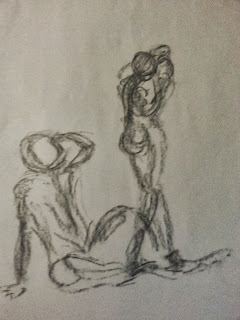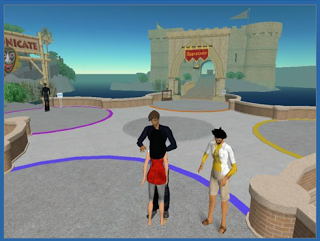The 4Ps of Co-Consulting
My colleague, Stan, and I have been working with two instructors to convert their face-to-face course to a blended course before it is fully delivered online. What makes this co-consulting distinctive in our case are the following key features:
1. People
There are two consultants in this session interacting with two clients (at times 3!) in real time. This entails a negotiation of roles and the values, beliefs and behaviors that come with the enactment of those roles. I am an instructional designer and Stan is an instructional technologist. To some people, these two labels mean the same thing. Our job responsibilities overlap but our foci differ somewhat. At the risk of oversimplification, Stan’s the technology guru and I’m the pedagogy pro. (In no way does this suggest Stan knows nothing about pedagogy or I’m a luddite.) We have interdependent roles.
Our clients are passionate about their cause and course. They want to create the best educational experience possible for their students. The group culture is a highly motivating one.
2. Promise
The promise of co-consulting is:
2 + 2 > 4
Our collaboration with our clients, who are subject matter experts, produces (we hope) a candescent synergy that does not come about through individual consulting. Keith Sawyer (2007) calls it “group genius” or emergent creativity.
How to make this knowledge visible beyond our small group is something
that is frequently on my mind. It will be the subject of another
blogpost!
3. Philosophy
Improvisation or “improv,” as the jazz greats call it, means we adapt spontaneously to our clients’ concerns about course design as the consultation unfolds. It’s a bottom-up approach driven by our clients’ needs; nothing is scripted in advance between Stan and I or our clients and us. Frequently, we cannot predict what design issues our clients might bring up. Through the unique backgrounds we each have about learning and teaching, we turn tacit into explicit knowledge through our interactions. We co-construct knowledge at each encounter (virtual or in-person) as we externalize and internalize ideas (Nonaka, 1998).
4. Practice
Who speaks when, what and how are decisions we make on the fly as the project progresses. Initially, I took the lead to provide some structure to the sessions. This practice was eliminated when it didn’t work well with our clients. An increasingly improvisational approach to co-consulting was adopted when we became more familiar with our clients.
Clear and accurate communication is vital to productive consulting outcomes. They are not unique to co-consulting. However, expectations about communication involving 2 consultants are different. What is the protocol and when to speak respectfully without jeopardizing creativity is a process we learn to navigate during each session.
For me, it flows out of the respect for the tacit and explicit knowledge that we bring to our formal and informal consulting sessions. I try to listen more than I speak. I let my clients’ fully express their thoughts before I comment. I am also not afraid to question to clarify ideas.
 |
| One dimension of Visible Thinking (Ritchart, 2002). Image copyright, Kreher, Y. W. |
Documenting thinking is a routine act. I practice graphic facilitation during the process. I also capture thinking after each session. I do this not for the sake of recording my efforts. I believe in modeling effective pedagogical behaviors supported by research. I convey my beliefs about making thinking visible for learning engagement. Modeling provides a bridge for the learner to move from surface to deep learning.
My role in co-consulting is fluid; I wear different hats at different times:
*Facilitator – group dynamics process expert
*Consultant – instructional design and technology content expert
*Coach – support client thinking
*Trainer – support client skills and knowledge development
*Leader – support group effectiveness by diagnosing and intervening in group processes
(Schwarz, Roger M., Davidson, Anne S., Carlson, Margaret S., & McKinney, Susanne C., 2005)
To conclude, four different people with different backgrounds and perspectives have the potential to produce magic. However, sometimes, differences made visible have the potential to derail productivity. This means all of us have to make some adjustments to self and others to foster the production of creative outcomes.






One Comment
Britt Watwood
Yin, I enjoyed hearing you and Stan discuss your co-consulting process. I particularly like your use of graphic facilitation and want to learn more. David Sibbet has written several books on the process, including VISUAL MEETINGS.